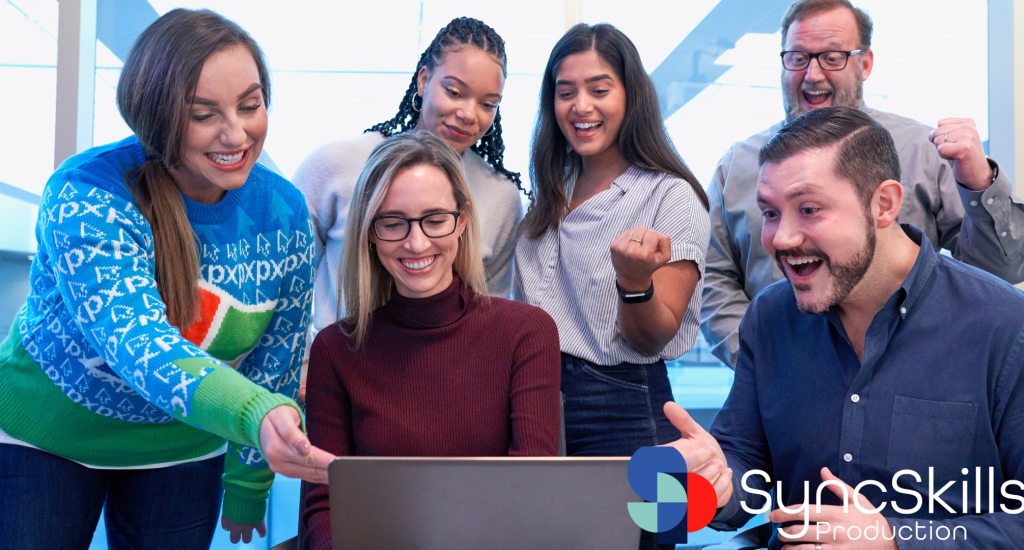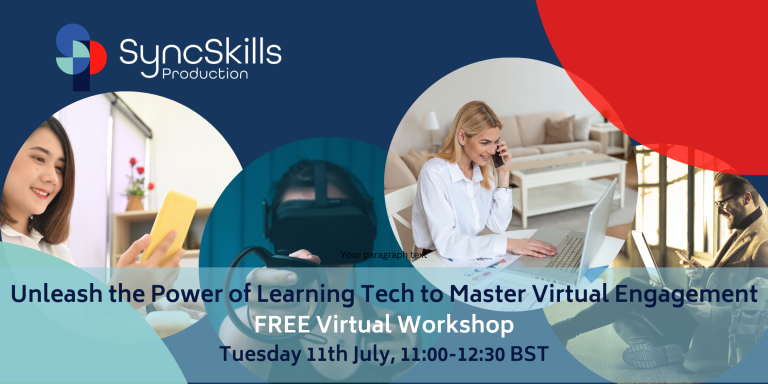
Last week we looked at the power of using a variety of learning approaches within our sessions. In the virtual environment in particular, learning technology is key to this.
So let me ask you, when you think about learning technology, how do you feel?
Sadly, despite the benefits learning tech has to offer, many of the trainers I meet say they find it overwhelming, frustrating and time consuming to choose, use and train others on the tools.
One of the issues is they‘re often directed to use specific applications by a client or training provider without really understanding why or how it’s supposed to help achieve the learning objectives. (In this scenario good old questioning of the rationale behind the learning tech selection is required!)
The other challenge is, when trying to identify the tech that will help them achieve their course learning objectives, the plethora of choice is highly confusing.
So lets look at these in turn…
Further posts
-
Contact SyncSkills
- +44(0) 1737 779480
- hello@syncskills.net
HOW TECH CAN SUPPORT LEARNING
Clearly, learning technology is only useful if it helps you solve a problem the learners or their organisations have. Here’s a non-exhaustive list of ways digital tools can support:

Yes, there’s the obvious one of improving accessibility for mobility impaired learners, parents and carers who are unable to travel to a physical training location, but there are many others too. For example, real time subtitles for hearing impaired learners, chat and response functionality for introverts, the inclusion of learner profiles to accurately showcase participant names and pronouns for full-self engagement, and a reduction of some of the visible differences that often underlie unconscious biases – such as the heightened awareness of physical features or cognitive differences that occurs when face to face.
We have seen many times in this series that pushing information and content to participants is not necessarily going to lead to a change of thinking or behaviour. You may not think about it as a learning technology but sharing a video such as a TEDTalk telling a powerful story can help participants answer the question “Why am I here today?”. Neuroscience shows us of the power of multi-sensory learning, of creating an emotional connection, and of mastering visuals and sound in authentic storytelling.


Many learning technologies combine AI and a ‘nudge’ based approach (micro-interventions that encourage awareness and guide the desired behaviour) to support learning and retention. They assess the current level of knowledge and present bites of content to reach the next level.
The chance to practice in a secure and accessible environment is crucial for fostering the adoption of new behaviors. Through digital applications, learners can engage in training experiences that range from simulating business-specific tasks to immersive virtual reality encounters. These are particularly useful for the development of skills necessary for handling multi-sensory, high-risk, and high-stress situations that are typically challenging, costly, or even impossible to recreate in real life.


Equipping participants with easy to access and use material is another key to success (and a friction when missing!). There’s nothing worse than having to go through a giant deck of slides to find the check list of the things you need to apply from the training course! There are a wide variety of on the job learning tools, such as checklists, process diagrams, and micro instruction videos – and as many applications to help you produce them. (I always find it useful to think of these tools in the same way as Paul Matthews, CEO, Author, Speaker – who says “It can be useful to think of this as performance support material rather than learning material.”)
The ability to simultaneously train and support large numbers of learners in a variety of locations at the same time on the same content is a huge benefit of digital learning tech, and a necessity for anyorganisations who needs their employees to be able to pivot quickly (which in this day and age, is pretty much all of them!).


Digital learning tech enables greater levels of real time, rich learning data that helps organisations monitor progress, evaluate effectiveness, and measure return on investment.
As a trainer, if you’re being asked to achieve certain learning objectives, cross reference them against this list of benefits for inspiration on how learning technology can help.
CHOOSING THE “RIGHT” LEARNING TECH
Given the breadth of the landscape, and the variety of objectives that need to be achieved, there is no such thing as the ‘right’ learning tech. There are some that will be better suited to achieving your goals than others, and others not specifically designed for learning that can be very useful. The secret, as always, is to be really clear on what you’re trying to achieve, and select the learning tech that enables this as seamlessly as possible.
There are many sources that compare and contrast the different digital tools available in the market, so I won’t attempt to do that here, but I did want to share a Miro board with some of the ones we use here at SyncSkills. Please take a look for inspiration on learning technology options – and if there’s anything you use that’s helpful and not listed – please just add it!
(Quick note, we’re not endorsing these technologies, they’re just options we’ve come across in the past that have worked well. Also, this isn’t covering LMS systems, but applications that can support engagement, activities, connection, and retention through repetition and storytelling.)
To help bring this to life, sign up for our fortnightly round up below to receive our ‘Creating a Learning Journey with Learning Tech’ handout.
Chosen wisely, and used well, learning tech will add immense value. BUT it’s up to us to practice using it before we deliver to ensure it doesn’t become a barrier!
If you’re keen to learn more about how to choose the learning tech that best helps you achieve your learning objectives, we’re running an interactive workshop on Tuesday 11 July (11:00-12:30 BST).
It’s going to be a highly interactive session, hosted by our expert virtual learning consultants, and joined by fellow trainers, coaches and facilitators, covering:
- Applying a learner centred mindset to virtual learning design
- Defining the impact of virtual sessions for both learners and organisations
- The key benefits and risks of the different categories of learning technologies
- How to combine different type of technologies to accelerate learning
- Measuring the business impact of virtual learning
- Selecting the most suitable technologies for your desired learning outcomes
Spaces are limited so to secure yours, head over to Eventbrite and sign up for ‘Unleash the Power of Learning Tech to Master Virtual Engagement’.
NEXT TIME
Join us again next week to cover some more tips, this time specifically around digital facilitation, that will keep your sessions running seamlessly.
To keep abreast of all the insights from this 12 week programme, follow us on LinkedIn, and sign up below for our fortnightly Virtual Learning Mastery round up.
We look forward to seeing you again next time!
Sign up to our dedicated fortnightly newsletter here:
-
Contact SyncSkills
- +44(0) 1737 779480
- hello@syncskills.net
We do not spam and you can unsubscribe at your convenience.



